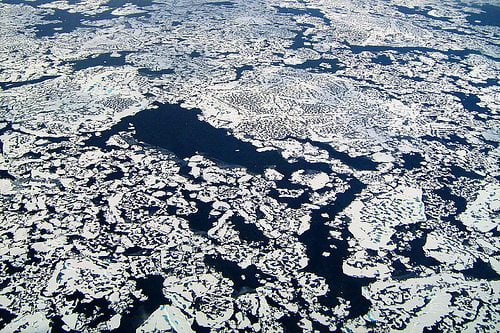

Environment
Arctic methane releases double previous estimates
The risk posed to the global climate by escaping reserves of methane from under melting Arctic ice may be bigger than originally thought, according to a new study.
The new research, published in the journal Nature Geoscience, claims that around 17 teragrams – or around 18.7m tonnes – of the greenhouse gas methane leaks from the East Siberian Arctic Shelf every year. These figures are around double the previous estimates.
Arctic permafrost traps methane as it rises from the Earth. Scientists have long expressed concern over the potential impacts of these stores of methane escaping at even faster rates as climate change causes permafrost to melt. It is feared that warming could cause a feedback loop – releasing methane that causes further warming which in turn releases more methane.
“We believe that release of methane from the Arctic, in particular, from the East Siberian Arctic Shelf, could impact the entire globe, not just the Arctic alone”, Natalia Shakova, lead author of the study and a biogeochemist at the University of Alaska told LiveScience.
The significance of the Arctic methane threat has recently caused heated debate between scientists.
In July, a separate study claimed that the release of a single “pulse” of methane from beneath the East Siberian Sea could cost $60 trillion (£39 trillion) alone. The global economy in 2012 was $70 trillion.
The study, by researchers from the UK and the US, says a 50 gigatonne pulse of methane could be released between 2015 and 2025. As methane is 20 times more effective at trapping heat as carbon dioxide, the study claims this would accelerate global warming by anywhere between 15 to 35 years.
However, the research has provoked a scientific controversy. Gavin Schmidt, climate scientist at the NASA Goddard Institute for Space Studies, took to Twitter to say the study was “misleading” and assumed an “unlikely” rapid increase in methane emissions.
In a 2008 report, the US Climate Change Science Programme also said that such a release appears “very unlikely”.
Shakova added that much more research is needed to properly understand the processes at work in the East Siberian Arctic Shelf: “Ten years ago we started from zero knowledge in this area. This is the largest shelf in the world’s oceans. That’s why it’s very challenging to understand the natural processes behind the methane emissions in this area.”
Further reading:
Arctic sea ice recovers from 2012 record low, but long-term melting trend continues
Controversy over methane ‘time bomb’ in melting Arctic
Melting Arctic could cost economy trillions – as well as being environmentally catastrophic
‘Last’ Arctic region succumbing to global warming


 Environment10 months ago
Environment10 months agoAre Polymer Banknotes: an Eco-Friendly Trend or a Groundswell?

 Environment12 months ago
Environment12 months agoEco-Friendly Home Improvements: Top 7 Upgrades for 2025

 Features9 months ago
Features9 months agoEco-Friendly Cryptocurrencies: Sustainable Investment Choices

 Features10 months ago
Features10 months agoEco-Friendly Crypto Traders Must Find the Right Exchange




























